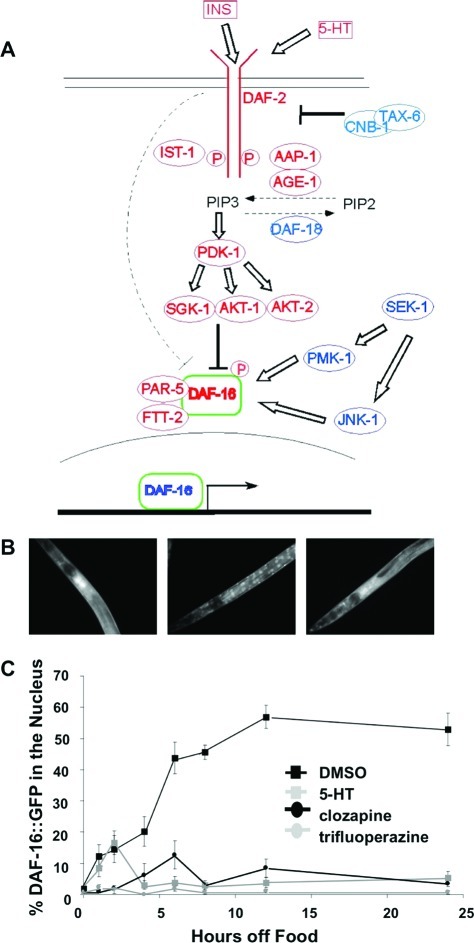Figure 1.
Clozapine and trifluoperazine increase insulin signaling to DAF-16. (A) The C. elegans Akt pathway (adapted with permission from ref (59). Copyright 2006 Society for Endocrinology). DAF-2 signals through the PI3K orthologue AGE-1, and the phosphoinositide-dependent kinase orthologue PDK-1 to a complex of kinases that includes serum glucocorticoid-inducible kinase (SGK-1), AKT-1, and AKT-2. These kinases phosphorylate the FOXO transcription factor DAF-16, which results in its retention in the cytoplasm (30−32,60,61) by association with two 14−3−3 proteins, PAR-5 and FTT-2 (62,63). Activating mutations in akt-1 and pdk-1 suppress dauer arrest in age-1 null mutants (31), but do not suppress dauer formation in daf-2(e1370) mutants indicating that DAF-2 signals to DAF-16 through both the classical Akt signaling pathway and an unknown pathway (dashed line). (B) DAF-16::GFP localization in C. elegans that were well fed (left), starved (center), and starved while exposed to 160 μM clozapine (right). (C) Time course of DAF-16::GFP nuclear accumulation during starvation. Serotonin, clozapine, and trifluoperazine suppressed nuclear accumulation. (For panel C, n = 30 for each condition; each data point represents the mean ± SEM.)

